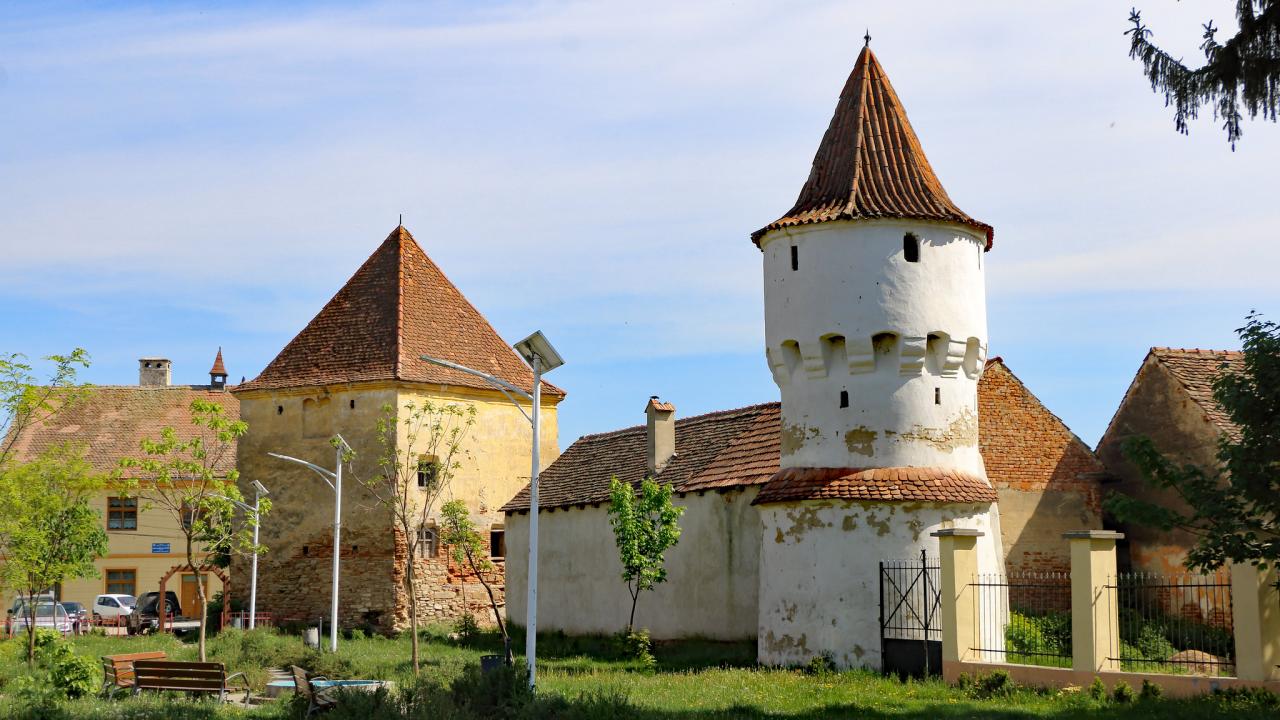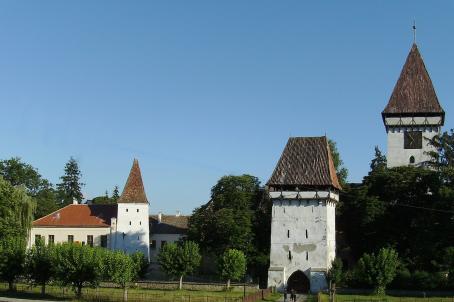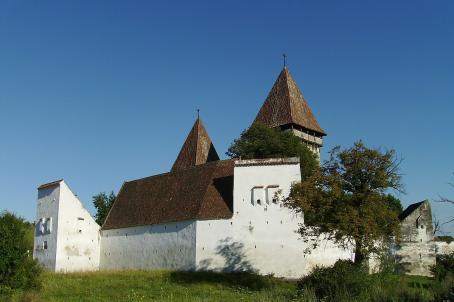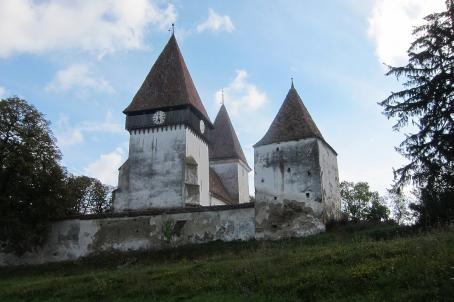Nocrich Fortified Church

The 13th century Romanesque basilica was demolished at the beginning of the 19th century, after a new church had been built in the neighbouring precinct in the same time. Disregarding the canonical orientation, the construction was built on the NS direction, with the chancel northward and the bell tower southward. The fortification, which was constructed in the 15th century around the old church, was enforced by five defence towers and had an outer bailey. End of the 18th century the number of towers raised to seven, but only for a short time: just few years later a big part of the wall was demolished and the resulting material was used for the construction of several administrative buildings.
The interior furnishing of the church boasts a unitary neoclassical style. The original lining of the galleries is still preserved and it has the form of a shirred curtain.
About this building
For more information visit on this building visit https://kirchenburgen.org/en/location/leschkirch-nocrich/





